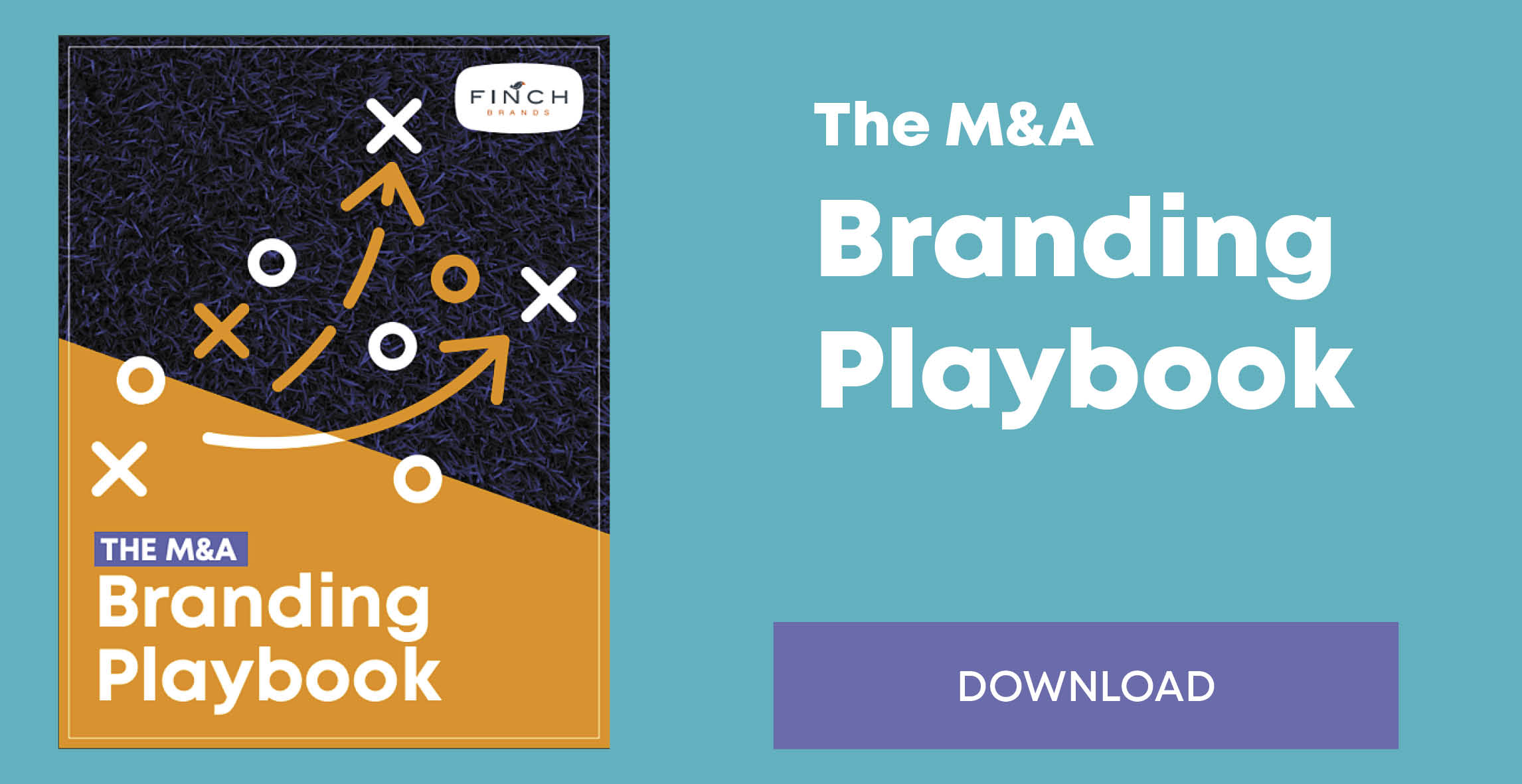Brand Architecture After a Merger or Acquisition

“Brand architecture” refers to how brand relationships are organized and expressed, including how names (corporate and product), logos, and other brand elements fit and work together.
After a merger or acquisition, brand strategy acts as a declaration of what the world should expect from the go-forward company. The first glimpse of the new entity, however, is often established through the brand’s architecture.
Brand architecture choices in the wake of M&A activity send signals to customers, team members, and other stakeholders, letting them know where the entity is headed and what is changing or staying the same. It is an essential artifact of the branding process and it speaks volumes to the marketplace.
The 4 Types of Brand Architecture Strategies
While M&A activity creates a whole range of brand architecture needs (as product lines merge, etc.), the highest level of architecture, the corporate name and logo, is one of the most important.
There are four prevailing corporate identity brand architecture strategies for M&A branding decisions, and the right approach is situational. The appropriate choice should be based on the overall business strategy and the nature of existing brand equities.
1. No Change Brand Architecture Strategy
Under a No Change strategy, the acquiring company makes no change to the acquired company brand — it keeps its name, logo, and sense of independence. The two brands may not actually operate independently, but they are expressed to the marketplace as separate from one another. A No Change approach is best used when all brands are clearly differentiated and hold a high degree of brand equity independently, creating a “house of brands” approach. The drawback, especially in B2B settings, is that the cross-selling aspect of the deal thesis is harder to realize if brands remain separate.
2. Fusion Brand Architecture Strategy
A Fusion strategy uses brand identity assets from various brands involved in the merger or acquisition to create a “new” corporate identity. A Fusion strategy communicates a shared future, making all team members feel valued, and often prevents large-scale team and customer alienation. However, if the fused brands feel forced or mashed together for the sake of an “easy” solution, there is a risk that the future direction will feel unclear or transitional due to clunky and uninspiring branding. Think Exxon Mobil, a brand identity that honors merger partners but doesn’t necessarily roll off the tongue!
3. Stronger Horse Brand Architecture Strategy
The Stronger Horse strategy elevates one brand (often the acquiring brand or the more dominant brand) while the other (immediately or eventually) disappears. This strategy creates simple, clear communication and builds equity in the “stronger brand,” yet can also feed the perception that the “loser” of the deal fades in importance. To achieve the upside of Stronger Horse, one must manage against the risk of brand equity destruction by deploying careful communication and brand migration.
4. New Brand Architecture Strategy
Under a New Brand strategy, an entirely new brand entity is created. This approach is most appropriate in categories undergoing extreme transformation. A New Brand approach is costly and time-consuming and there is risk of confusion for both customers and team members. But creating something perceptually new and innovative in a changing world can help define the go-forward brand as an industry innovator. Think GTE and Bell Atlantic merging to create Verizon — an integrated brand for a mobile world.
Choosing the Right Strategy and Managing Migration
Each approach has its own pros and cons. The right answer is based on company, category, customer, culture, and other distinctive situational characteristics. While these options define the desired steady state, it is also very likely that going from here to there requires a migration strategy that documents transitional steps and key milestones.
This migration strategy defines the steps from the current state (multiple brands in an M&A process) to the steady state (the emergent brand architecture per the choices above). The goals of migration are to bring the team/market along for the transition while protecting brand equity.
While any form of migration will require ongoing internal and external communication, there are a range of approaches in terms of what the market sees. For example, many firms employ an “endorsed” brand architecture — that is anchoring an acquired brand within the acquiring brand (“powered by…” or “a division of…”) to establish an affirmative linkage while preserving the acquired brand equity for a period of time. An endorsed brand architecture can be a long-term solution or a time-limited migration strategy meant to ease risks associated with brand transition.
Whatever the right brand architecture and migration strategy, communication — both internally and externally — is essential. Brand architecture, when skillfully managed, strengthens key brand equities while managing the risks inherent in any change.







